China, the hometown of tea, has a tea history of about 4,000 years. For Chinese, tea is not only a beverage good for health, but an integral part of Chinese traditional culture. If you are eager to taste authentic tea and learn Chinese tea culture, how can you miss this 13 days China tea culture tour? All the attractions of the tea tour to China are carefully selected. You will be taken to Shanghai downtown to appreciate a tea ceremony where you may also see local people frying tea. Then, you will go to Hangzhou to taste Longjing Tea and have a chance to see tea trees in Longjing Tea Plantation. In Guilin, you will taste a different kind of green tea, Yangshuo oil-tea. The more you drink it, the more you will love it. In Chengdu, you will be taken to People’s Park to have a cup of Gaiwan tea. The last stop of your China tea culture tour is Beijing, where you can appreciate a tea ceremony and have a cup of jasmine tea, the favorite tea of Beijingers. By the end of your tour, you will better understand Chinese tea culture and know more about different kinds of Chinese tea. What are you waiting for? Join us to have a tea culture tour to China.

Welcome to Shanghai! Shanghai, a modern and open city, is the largest commercial and financial center in China. Here, you can see the old-fashioned western buildings and modern skyscrapers. Especially, the night scene of buildings is glamourous and well worth seeing.
Upon your arrival at the Shanghai airport, our warm-hearted guide will hold your name sign and wait for you at the arrival hall. Then, our driver and guide will escort you to the hotel. On the way to the hotel, the guide will tell you matters needing attention as well as interesting information about the tour. Of course, you are free of asking any questions, they are willing to answer you. When you arrive at the hotel, the guide will help you to check in and you can have a good rest.
In the morning, we will take you to the Yu Garden (closed on Mondays). It is located at the center of Shanghai and was built in 1559. With a construction area of about 20,000 square meters, it can be divided into six scenic parts, each of which has its special features. Walking into the Garden, you may feel like that you have been in a labyrinth full of rockeries, corridors, gardens, pavilions, fountains, lakes, bridges, etc. Every corner you turn to is such an eye-catching picture that you cannot help taking a picture of it. Besides appreciating the scenery, you can also see lots of precious Chinese paintings, calligraphies, sculptures, etc. The dragon sculptures on the top of the wall are quite impressive. You can see three-dimensional three-claw dragons with white teeth on the undulating walls. The scales on the dragon’s body are made of black-gray tiles. Visitors who have been there before said that they could spend hours and hours looking at these intriguing things.
And then you will go to the Mid-lake Pavilion to enjoy a traditional Chinese Tea Ceremony. It is the oldest tea house in Shanghai with an exquisite and traditional Chinese-style façade, brightly colored in red and white. The Mid-lake Pavilion is aimed at carrying forward Chinese tea culture. In 1990, the first tea performance team was set up there. From then on, several characteristic tea parties are held at the Mid-lake Pavilion each year, such as the Longjing tea party in Spring and the Oolong tea party in Autumn. If lucky, you may have a chance to see the Chinese tea ceremony here. Besides, the tea provided here is very special. It is made with pure mineral water, and the tea leaves are picked from the finest tea trees in Hangzhou. Sometimes, you may hear Chinese music played by a band using woodwind and string instruments. In addition to tasting tea, you may also see the stir-drying tea process here.
After the enjoyment of the tea ceremony, you will walk to the Shanghai Old Street, which is adjacent to Yu Garden. This street is centered on shopping, entertainment, and exhibiting. There are carefully designed 225 stores, selling handicraft articles, jewelries, foods, and clothes. You can try some local foods, such as pan-fried pork buns. The succulent pork buns are hard to resist, which are fried and garnished with fresh spring onion and toasted sesame. It’s quite small in size, similar to a golf ball, or even smaller. The ones just out of the pan taste best and the pan-fried pork buns may become the most memorable meal you had there.
After lunch, we will take you to visit the Tianzifang Market. This market, a shopping and artsy area, has preserved the original architecture. You’ll see Chinese-style stone-gate buildings standing together with the French-style exotic buildings. Wandering through the alleys, you will come across hundreds of bars, cafes, crafts shops, and design houses. Besides, you may also see lots of White Rabbit Creamy Candy stores. The White Rabbit Candy first appeared in the 1940s. Since then, it has become a favorite candy for Chinese people and even has been exported to over 40 countries. We strongly recommend you to taste this milk-made white candy, which has a soft and chewy texture. If you want to buy gifts for kids even grow-ups, White Rabbit candy is a great choice. In addition to its original flavor, new flavors such as strawberry, mango, yogurt, and chocolate are also worth trying.
The last attraction of today is Shanghai Tower. It is 632 meters high in total and has 132 stories, making it the second-tallest building in the world. Although the Shanghai Tower is lower than the Burj Khalifa Tower, on its 118th floor, there is the highest observation deck. Taking the world’s fastest elevator to the observation deck, you can have a bird’s-eye view of Shanghai’s urban scenery, which is more beautiful than the desert that can be seen from the Burj. After you feast your eyes on the wonderful scene, we will escort you back to the hotel.
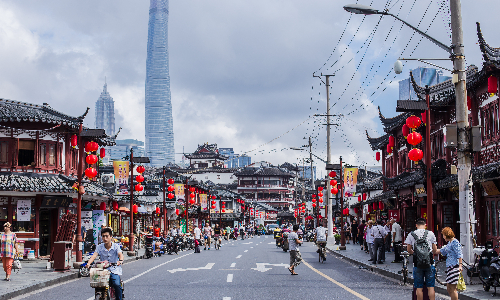
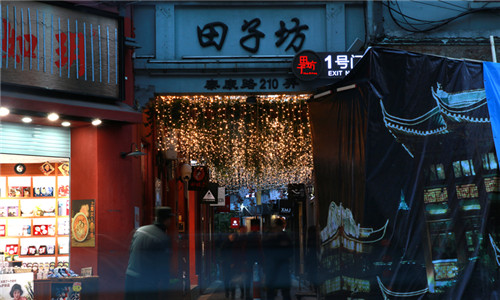
 Hangzhou
Hangzhou After breakfast, your guide will help you check out. Then, you will be transferred to the train station and take the estimated high-speed train G85 08:00/08:45 to Hangzhou. Your friendly Hangzhou tour guide will wait for you at the train station. This city is famous for its gorgeous scenery and high-quality Longjing tea. Marco Polo once came here and described it as the most enchanting city in the world.
This morning, your guide will take you to visit West Lake, which is the most renowned and must-visit attraction in Hangzhou. In 2011, it was listed as a Cultural Heritage Site by UNESCO. It covers an area of about 50 square kilometers in total and is surrounded by mountains on three sides. You will take a boat sailing on the picturesque lake to admire the beautiful scenery. It is worth mentioning that if you have a Chinese one Yuan banknote, you can find the scenery of West Lake on its back, named Three Pools Mirroring the Moon. The West Lake is not just famous for its scenery, but also famous for its stories. One story is about the invention of the umbrella. Luban was a famous craftsman in ancient China. One day, he and his wife were strolling at the West Lake and appreciating the beauty of it. Suddenly, it rained heavily and both of them got soaked. After arriving at home, they began to think if there was something could prevent the rain. Several days later, they saw some boys playing nearby West Lake, each of whom was holding a lotus leaf above head in the rain. They were inspired by such a scene. When they came home, Luban made a wooden lotus-leaf-shaped structure. And his wife tailored a piece of cloth into proper size to cover the structure. Luban used a straight wood stick to support this structure, and then a lotus-leaf shaped umbrella was made. That is the original umbrella in China.
After lunch, you will visit Feilai Peak. Feilai means “flying over here from other places”. The peak is a pure limestone peak, quite distinctive from the surrounding sandstone peaks, so it is like a peak flying from other places. There are over 340 Buddhist stone statues between the 10th and 14th centuries on this peak. These statues are carved with various postures, including standing, sitting, and sleeping. The most famous one is the Maitreya Buddha statue carved on the cliff along the stream. This statue is carved with exposed breast and a big belly. Besides, you can see a big smile on his face. Because of his big smile, he got the nickname “Laughing Buddha”. If you wonder why his belly is so big, the answer is that the Buddha uses his belly to contain all the trouble in the world. Take a photo with him, and then you maybe forget your own trouble for a while.
Next, you will visit Lingyin Temple, adjacent to Feilai Peak. It was first built in 326AD and is one of the oldest and the most magnificent ancient Buddhist temples in China. For its long history and charming scenery, Lingyin Temple attracts thousands of Buddhists and visitors every day. There are many halls in the temple, such as the Hall of Heavenly Kings, the Great Buddha’s Hall, and the Hall of Five Hundred Arhats. In the Great Buddha’s Hall, you can see the statue of Sakyamuni carved in 1959. The statue is 24.8 meters high, making it the largest camphor-wood-made sitting Buddha statue in China.
The last stop of today is the Longjing Tea Plantation. Here, you can appreciate the vibrant tea trees, taste the fragrant Longjing tea, and learn more about Chinese tea culture. Longjing Tea, a kind of green tea over 1,200 years old, is the No.1 tea in China. The tea is renowned for its high quality with long-lasting fragrance and mellow taste. It is also called West Lake Longjing Tea because it is mainly planted in mountains surrounding West Lake. How is Longjing Tea made? The tea leaves are picked during different periods. The best batch of tea leaves is picked before Qingming Festival (at the beginning of April), so it is also called Mingqian Tea (Mingqian means before the Qingming Festival). And then tea growers spread the tea leaves on the ground for over 2 hours to evaporate the moisture in a sunny day. Next, it is the most important step - stir fixation. Stir fixation means to stir and fry the tea leaves in a pan to fixation. After that, the leaves are sifted to make sure the left leaves have the same size. After the above processing steps, the Longjing Tea is made.
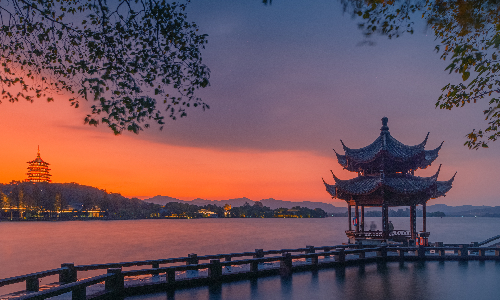
 Guilin
Guilin After enjoying breakfast, you will be transferred to the airport and take the estimated flight CA4645 10:05/12:25 to Guilin. Your Guilin guide will wait for you at the arrival hall. After meeting you, we will go to visit Reed Flute Cave, which is 5 kilometers northwest away from downtown Guilin. It is a limestone cave and started to form about 180 million years ago. In the past, many reeds grew outside of the cave and the reeds could be made into flutes, so people called this cave “Reed Flute Cave”. Walking on a U-shaped path throughout the cave, you can see various stalactites, colorful lights, and ink inscriptions. The stalactites here have various shapes, like flowers, mushrooms, human figures. The most famous place of the cave is the Crystal Palace, the widest part of the cave. There is a hall and a few stalactites at this area. With the colorful lights, these stalactites look like lanterns, illuminating the hall and making this place unique and quirky. After visiting the Reed Flute Cave, your guide will take you back to the hotel.
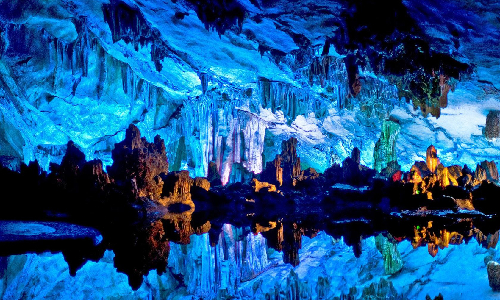

 Yangshuo
Yangshuo Guilin
Guilin This morning, we will drive southeast for about one hour to the Mopanshan Wharf, about 35 kilometers away from downtown Guilin. After arriving at the Mopanshan Wharf, you are going to start your Li River Cruise to Yangshuo. The total length of this cruise journey is about 64 kilometers, and it will take about 4 hours. You will have an incredible view of Guilin’s famous Karsts landscape on the ship. Among all of the attractions, Nine Horse Fresco Hill (also called Mural Hill) is the most important landscape you should not miss. Looking from a distance, it looks like a mural; looking more carefully, you can see nine horses in various poses on the cliff, like standing, lying, drinking water, jumping, or neighing. Legend says that the more horses a person can point out, the smarter he or she is. In the past, If the person could find all the nine horses, he would be the number one in the next imperial examination. It is said that Premier Zhou Enlai and President Bill Clinton once visited here, and both of them had pointed out the nine horses. When you come here, you can try to find out all the nine horses.
On disembarking at Yangshuo county, we will go to visit Yangshuo West Street. This street has a history of over 1,200 years, making it the oldest street in Yangshuo. Since the 1980s, foreign visitors started to visit this area and some of them even settled here. On the street, you can see almost every store has bilingual shop signs, and over 20 stores are run by foreigners who settled here. Besides, on this street, you can try the Yangshuo oil tea, which is a specialty there and is loved by the local people. It is said that the more you drink the more you will love it. You may wonder how to make the oil tea. First, soak the tea in water. Then, add oil to fry the soaked tea with garlic, chili, salt, ginger in a wok, during which process, add a little water while stirring it until the tea flavor releases. Finally, fill the wok with water, and wait for the water to boil. Then the oil tea is completed. After the visit here, you will be driven northward for about one hour and forty minutes to Guilin city, 70 kilometers away from Yangshuo West Street.
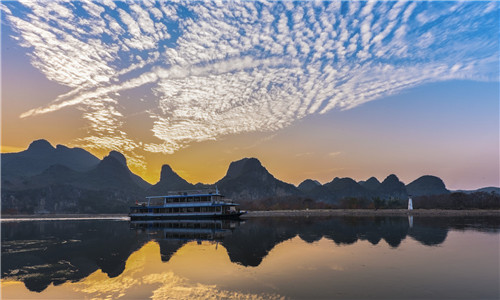
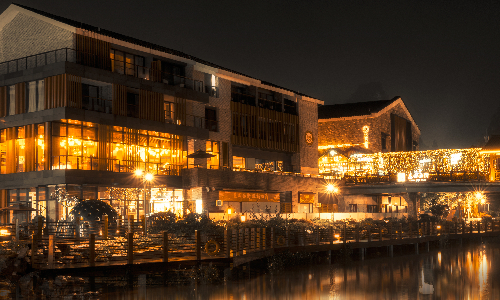
 Chengdu
Chengdu This morning, your guide will help you check out and escort you to the airport. You will take the estimated flight CA4324 11:50/13:35 to Chengdu. Your guide and driver will pick you up at the arrival hall, and then your tea tour in Chengdu will begin.
We will first drive to People’s Park to taste tea. It is located in the center of Chengdu with an area of 112,639 square meters. People’s Park is the largest and earliest park in Chengdu, integrating heritage protection and recreation. Here, you can appreciate many charming landscapes, such as Goldfish Island and Gold Water Stream. Besides, you may see people drinking tea, leisurely chatting, playing cards, or playing mahjong. There are approximately 10,000 tea houses here. And the desks and tables are mainly classical bamboo chairs and small wooden tables. You will have a chance to walk into a tea house to taste the authentic tea, maybe a cup of jasmine tea or green tea, etc. All the tea here is called Gaiwan tea(‘Gai’ means lid and ‘wan’ means bowl.), because the tea is provided in a lidded bowl. Gaiwan is made of porcelain. It can preserve the tea heat and lock the tea flavor. Gaiwan consists of three parts, including saucer, cup, and lid. When you drink Gaiwan tea, you should hold all three parts at once with one hand. And then, the other hand holds the lid and uses it to brush away the tea leaves before taking a sip. Come here and try this new way to drink tea.
Then, you will visit the Kuanzhai Alley nearby. It consists of three parallel alleys, namely Kuan Alley, Zhai Alley, and Jing Alley. Kuan Alley means wide alley with a width of 7-8 meters; Zhai Alley means narrow alley with just 5 meters in width; Jing Alley means alley of well because there is a well in the west end of this alley. Walking on Kuan Alley, you will see many traditional courtyards with exquisite doors. Wandering in Zhai Alley, you will see some western-style buildings mixed with Chinese-style buildings because many foreign people bought and rebuilt houses here in the early 20th century. In Jing Alley, there is a 500-meter photo wall showing the folk life and historical culture. These three-dimensional photos attract lots of visitors coming here everyday.
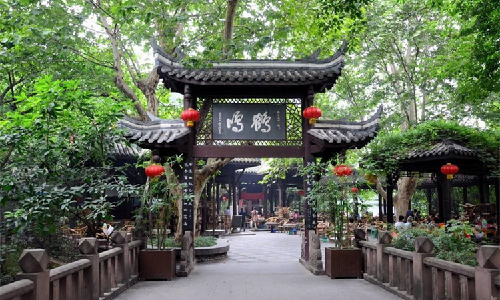
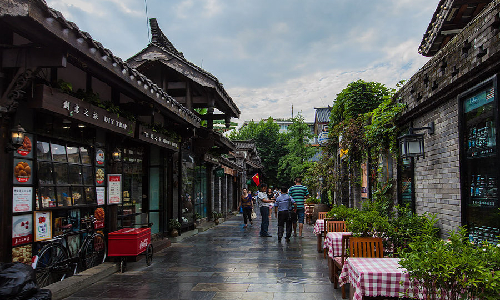
After breakfast, you will visit the Chengdu Research Base of Giant Panda Breeding to see lovely pandas. Panda is China’s “National Treasure” and is one of the rarest animals in the world. The base is located 10 kilometers from downtown Chengdu, covering an area of approximately one square kilometer. It was established in 1987 with six sick and hungry pandas rescued from the wild nature. It was built according to the natural conditions favored by pandas, furthermore, equipped with the delivery room, hospital, panda house, and research center. Morning is the best time to visit the base because the pandas are active at that time. Here, you can closely observe giant pandas eating, drinking, playing, and resting. Luckily, you may see cute baby pandas just a little larger than your palm in the delivery rooms. I am sure your heart will be melted by these chubby pandas.
In the afternoon, you will go to Wenshu Temple. Wenshu Temple has a history of more than 1,000 years and is the best-preserved Buddhist temple in Chengdu. There are over 300 Buddha statues that were made of diverse materials, including bronze, iron, stone, wood, and jade. Among them, the most famous statue is the delicate jade Buddha statue. The jade Buddha was brought from Burma to China in 1922 by a Buddhist monk, called Xing Lin. Besides the Buddha statues, there are more than 500 famous painting and handwriting works, which were created by Chinese celebrities. In addition, you can see a beautiful garden, a tea house, and a vegetarian restaurant inside Wenshu Temple.
Then you will be driven to Wuhou Temple. It was built in memory of Zhuge Liang, an excellent statesman and strategist of the Kingdom of Shu during the Three Kingdoms Period (220-280). Because of Zhuge Liang’s magnificent contribution, he was called Wuhou (Martial Marquis) after his death. Therefore, the temple got its name - Wuhou Temple. On the central axis of Wuhou Temple scenic area, there are the Front Gate, the Second Gate, Liu Bei Temple (the king of the Kingdom of Shu), Wuhou Temple, and Sanyi Temple (commemorating the brotherhood of Liu Bei, Guan Yu, and Zhang Fei). In the main hall of Liu Bei Temple, you can see a three-meter-high golden sculpture of Liu Bei with a shining imperial crown on his head. Zhang Fei’s statue and Guan Yu’s statue are in the left and right halls respectively. These two people are both excellent and loyal martial generals assisting Liu Bei in governing the Kingdom of Shu. After visiting the Wuhou Temple, you will be escorted to the hotel.
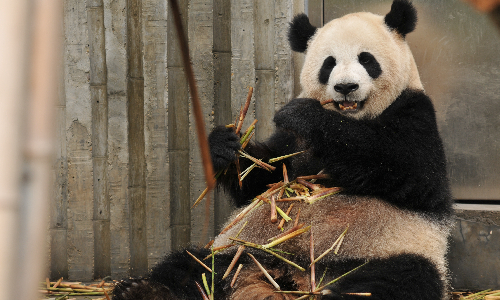
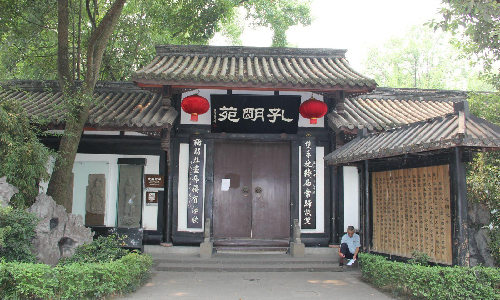
 Xi’an
Xi’an In the morning, you will take the estimated flight MU6795 08:55/10:20 to Xi’an. It has a history of over 3,000 years and was the ancient capital of 13 dynasties. There are many historical ruins, cultural relics, and museums in this city.
Your Xi’an guide will pick you up at the airport, and then drive southeast for about an hour to Xi’an Old City Wall, about 37 kilometers from the airport. It is considered the best-preserved ancient city wall in China. The rectangular-shaped city wall is 13.75 kilometers long in total and is surrounded by a deep moat. Why has this city wall stood for nearly 700 years? Firstly, it measures 12 meters in height with 12-14 meters in width on the top and 15-18 meters at the base. Stabilization can be ensured when the thickness of the wall is larger than its height. In addition, the wall is of rammed earth construction, a building method of compacting a mixture of soil, fine sand, lime, and wheat straw into forms. Besides, the base layer of the wall was made of mixed glutinous rice extract, quick lime, and soil, which made the wall extremely solid.
Then, the guide will take you to Muslim Quarter. It is also known as Huimin Street (Huimin means Hui ethnic people in Chinese), consisting of several old streets for more than 1,000 years. Nowadays, the number of Hui people lived there has reached about 60,000. The street is famous for its nearly 300 kinds of delicious food, which attract numerous local foodies and tourists to satisfy their taste buds. You can try the special local food along this unending line of food stalls and restaurants, such as pita bread soaked in lamb soup, rice and jujube cake, and cold noodle with sesame. Pita bread soaked in lamb soup is one of the most popular foods in Shaanxi. The baked pita bread needs to be split into pieces and then soaked in lamb soup. The soup is made of chewy vermicelli, garlic, agaric, fresh mutton, and other seasonings. The soaked pita bread is tender with fresh lamb flavor. If you prefer spicy food, you can add chili oil to it.
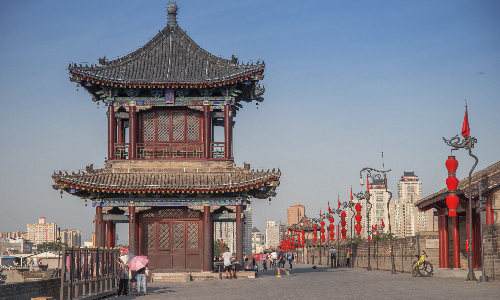

In the morning, we will drive northeast for about an hour to Terra Cotta Warriors and Horses Museum, 40 kilometers away from downtown Xi’an. The museum was listed as the World Heritage Site in 1987 and is one of the Eight Wonders of the World. This museum refers to the burial pits of the mausoleum of Qin Shi Huang (the first Emperor of China). When he became the emperor at the age of 13, he ordered to build his grand mausoleum as well as the burial pits, which involved nearly 720,000 laborers and took 38 years. At present, there are over 8,000 vivid terra cotta warriors and horses excavated. In the Exhibition Hall, you can see two Bronze Chariots and Horses on display, which were found on the west side of the Mausoleum in 1980. They are the largest, and the most well-preserved ancient carriages. The chariots were drawn by four horses, and they are the half size of the real chariots and horses. These two exquisite chariots were made of more than 3,000 components, and some of the techniques of making this chariot are still unknown to us.
Then, you will be driven back to the center of Xi’an to visit the Small Wild Goose Pagoda (closed on Tuesday). It is located on the central axis of Jianfu Temple and was constructed between 707 and 710. There are two Wild Goose Pagodas in Xi’an, and the other one is called Giant Wild Goose Pagoda. Both of them are important Buddhist sites and were used to store the Buddhist sutras brought back to China by monks Yi Jing and Xuan Zang respectively. There is a legend about the Small Wild Goose Pagoda. It is said that, the pagoda magically restored its crack caused by two earthquakes. The first violent earthquake happened in 1497, causing an over 0.33-meter crack in the middle of the pagoda. However, in 1521, the crack disappeared when another violent earthquake happened. Local people were astonished and they called it a “Magical Combination”. In 1556, an earthquake attacked the pagoda again, the 15-story pagoda became today’s 13-story pagoda with about 43.4 meters in height. However, it remains firm and sturdy during the following years. In 1949, the mystery was revealed. It turned out that the rammed earth under the base of the pagoda was compacted into a shape of a hemisphere, which can evenly distribute the impact of the earthquake. This structure embodies the great wisdom of marvelous ancient craftsmen.
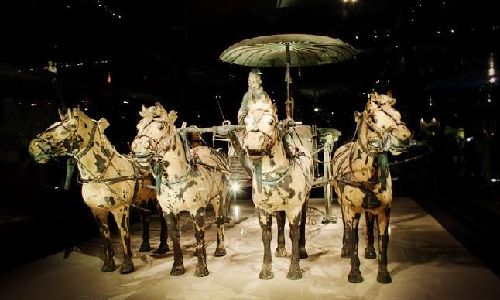

 Beijing
Beijing This morning, the guide will help you check out, and then transfer you to the airport to take the estimated flight HU7138 10:30/12:45 to Beijing, the capital of China.
In the afternoon, the guide will take you to visit the Hutongs. A hutong is an alley or lane between the traditional courtyard compounds (called “siheyuan” in Chinese). Viewed from the top, interlaced Hutongs resemble a chessboard or maze. Most of the Hutongs here were built in the Ming and Qing Dynasties(1368-1912), retaining the traditional culture and way of life. It is said that the number of Hutongs has reached 3,250 by 1949. however, due to the urban planning, there are no more than 1,000 Hutongs left, and many of them have been transferred into tourist attractions. In Hutongs, there are many available rickshaws and taking a rickshaw to explore Hutongs is the most classic and popular way for visitors. Rickshaw is a three-wheeled vehicle rode by a man. It has a chair-like body that can hold one or two passengers and a bicycle-like head. You will also explore the Hutongs by a rickshaw.
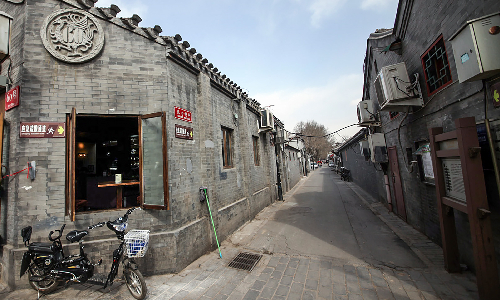
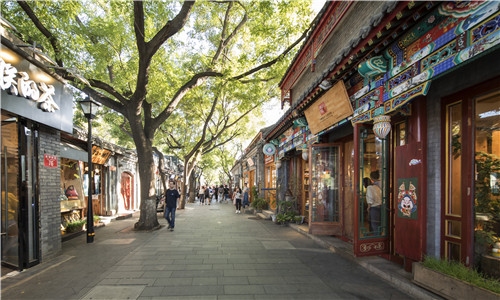
After breakfast, you will have a visit to Tian’anmen Square. It is the largest city square in the world with an area of 440,000 square meters. On this square, you will see the National Flag Pole, the Monument to the People’s Heroes, the Memorial Hall of Chairman Mao Zedong, etc. Among them, the Monument to the People’s Heroes was built to commemorate thousands of martyrs who died in the wars since 1840. It is 37.94 meters in height and is made of 17,000 pieces of granite and white marble stones. Its facade is engraved with 8 Chinese characters (which means “Eternal glory to people’s heroes”) written by Chairman Mao Zedong; on the back of it, you can see the 150-character inscription drafted by Chairman Mao Zedong and written by Premier Zhou Enlai; on the pedestal of it, you can see eight white marble reliefs which present eight significant events happened in China’s modern history.
Then, you will go to the Forbidden City (closed on Mondays). It is the largest and best-preserved ancient palace complex in China. Built between 1406 and 1420, the Forbidden City was home to 24 emperors of the Ming and Qing Dynasties. After the last Chinese emperor was overthrown, the Forbidden City became a museum open to the public in 1925. Stepping into the Forbidden City, you will find that the prominent colors of the buildings are yellow and red. The walls, doors, windows, and pillars are painted in red and the roofs are made of yellow glazed tiles. It is because Chinese people regard red as an auspicious color that brings good fortune and happiness. It is said that more than 100,000 years ago, our ancestors preferred to decorate their dwellings with red. To show the dignity and wealth of the emperor, red was commonly used in palace buildings from the Zhou Dynasty (1046BC-256 BC), which has been passed down to the following dynasties. In the past, yellow was a kind of royal color used by the emperors, which represented power and authority. This color was chosen as the exclusive color for the emperor’s buildings, and only the emperor could wear yellow clothes.
After lunch, you will go to Yixin Tea House to watch a Tea Ceremony. The whole tea ceremony will take about an hour. Then, you will be taken to Summer Palace in northwest Beijing. The Summer Palace used to be a summer resort for royalty. Nowadays, it has become a popular tourist destination. Inside the Summer Palace, there are Long Corridor, Longevity Hill, Kunming Lake, and Marble Boat, etc. The Long Corridor measures 728 meters long, and there are brightly colored paintings on each beam, about 14,000 paintings in total. Some of them depict flowers, birds, fish, and insects, while other paintings are associated with folk tales. Taking one of the classic folk tale paintings as an example: Kong Rong Shares Pears. In the Eastern Han Dynasty(25-220), there was a 4-year-old boy named Kong Rong whose age ranked the sixth among all seven brothers. One day, their father bought some pears and asked the children to share them. Kong Rong was asked to take a pear first, and he chose the smallest one. His father was surprised and asked him the reason. Kong Rong said: “I am younger, so I should eat the smaller one. You and my elder brothers should have the bigger pears.” The father said: “How about your younger brother? Why don’t leave the smallest pear to him since he is the youngest?” Kong Rong replied: “I am his elder brother, so I should leave the bigger pears to him.” This story shows Kong Rong’s good morality and it has been passed down for thousands of years.
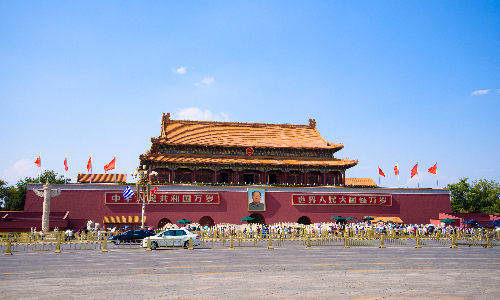

In the morning, you will be driven to Ming Tombs, located northwest of Beijing. It takes about an hour to go to the Ming Tombs, 50 kilometers away from downtown Beijing. The Ming Tombs are the cemeteries of 13 out of 16 emperors of the Ming Dynasty(1368-1644), together with their empresses and concubines. These thirteen mausoleums have similar architectural styles. Of the 13 tombs, only three tombs are open to the public, namely Chang Tomb, Ding Tomb, and Zhao Tomb. In the middle of all tombs stands an avenue named Shenlu (which means Sacred Way). Walking to the end of Shenlu, you will see Chang Tomb, the largest, first constructed, and best-preserved tomb of all the thirteen tombs. It is the tomb of Zhu Di, the third emperor of Ming Dynasty, who had ruled China from 1402 to 1422. Besides Emperor Zhu Di, his wife (Empress Xu) was also buried here. The Ming Tomb covers a total area of 0.12 square kilometers, which is divided into front area and back area. The front area consists of three successive courtyards and the back area is the site where Empress Xu was buried.
After lunch, we will drive for about an hour to visit Badaling Great Wall, about 40 kilometers northwest away from the Ming Tomb. Among all the sections of Chinese Great Wall, Badaling Great Wall is the best-preserved and most popular section. This section measures 12 kilometers long, and its wall is about 7.8 meters tall and 6 meters wide on average, which could accommodate five horses or ten soldiers to march abreast in the past. There are 43 watchtowers on the Badaling Great Wall, which were used to send messages, observe and attack enemies. This Great Wall has attracted tens of millions of tourists, and over 370 leaders and celebrities have visited here. Standing on the Great Wall, you will marvel at this ancient majestic defense project and the spectacular natural scenery. In addition, there are many stories about the Badaling Great Wall. One of them is about the Treasure Bottle Spring near the Badaling Great Wall.
During the construction period of Badaling Great Wall, the weather was very hot and there is no enough water for the laborers to drink. So they always feel very thirsty. As the hot weather and heavy work, some laborers even fainted. One day, a young girl holding a white bottle suddenly appeared. She gave the bottle to the laborers and asked them to drink it. The laborers drank the water in turn, and they surprisingly found that the water in the bottle is endless. Then everyone got to know that she is a fairy and the bottle was a treasure bottle. However, the supervisor saw it and grabbed the bottle. But he accidentally dropped the bottle, which was smashed into pieces. All the laborers felt sad and angry. A few moments later, they found that the water on the ground became a clear spring. Seeing that, the laborers were so glad. Since then, the laborers could constantly drink spring water and didn’t need to suffer thirst. Later, the spring was called “Treasure Bottle Spring”. After visiting the Great Wall, we will drive back to the hotel.

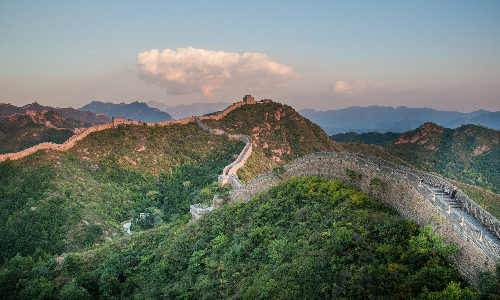
Your memorable China tea tour will come to an end today. Your private guide will help you check out and then escort you to the airport according to your flight schedule.
Editor: Yibo Zhang
Proofreader: Yan Liu
| City | Five Star hotel list | Four Star hotel list |
|---|---|---|
| Shanghai | Ocean Hotel Shanghai | Courtyard by Marriott Shanghai Central |
| Hangzhou | Landison Plaza Hotel | Best Western Plus Meiyuan Hotel Hangzhou |
| Guilin | Lijiang Waterfall Hotel | Guilin Bravo Hotel |
| Chengdu | Sofitel Chengdu Taihe | Holiday Inn Express Chengdu Jinniu |
| Xi'an | Tianyu Gloria Grand Hotel Xi'an | Sunworld Dynasty Hotel |
| Beijing | Sunworld Dynasty Hotel Beijing Wangfujing | Sunworld Hotel Wangfujing |
 |
![]() About your child or infant, please contact us for a discounted price.
About your child or infant, please contact us for a discounted price.



We started with a few days in Beijing & ended in Shanghai, from where we visited the Forbidden City and Great Wall. In between we visited Terra Cotta Warriors Museum, Panda Base, Shanghai Disneyland.

We had a wonderful holiday in China which will remain long in the memory. China is a breathtakingly beautiful country full of splendid temples and palaces, mountains and rivers, peaceful rural scenes and bustling shopping streets.
 QUICK ENQUIRY
QUICK ENQUIRY